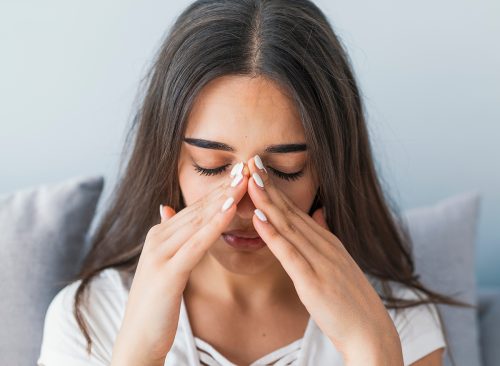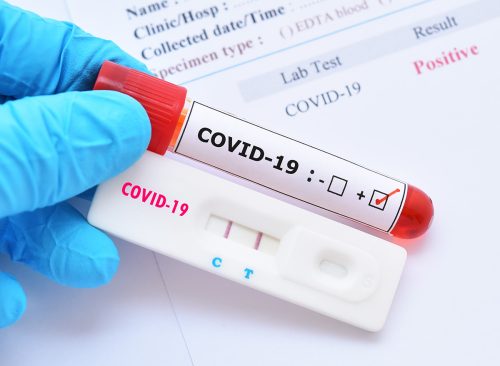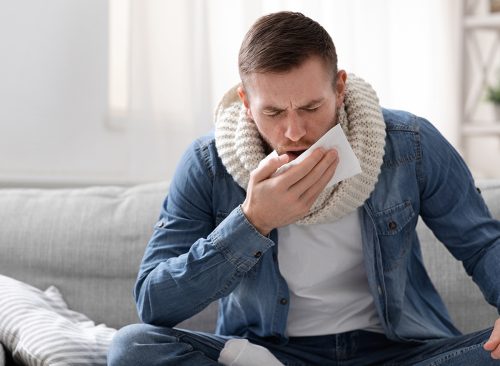New COVID Variant Symptoms Usually Appear in This Order
Dana Mincer, DO, reveals signs and symptoms of EG.5.
When it comes to COVID, it isn’t uncommon for cases to spike in the fall and winter – and 2023 is no exception. However, this year there is a new mutation infecting the world. “EG.5 is an Omicron strain with a new mutation of the spike protein,” explains Dana Mincer, DO, a board certified doctor in family medicine. And, like other strains, there are some symptoms that are more common than others. “It’s this new mutation that’s likely causing people to have symptoms, because they’re not yet immune,” she adds. Here are the symptoms you should look out for, in the exact order they usually come in. (Every case is different.)

If you experience congestion, like a stuffy nose, you might be thinking “am I having allergies?” “But this is usually the first symptom to pop up,” says Mincer.

The next symptom patients usually complain about is a sore or scratchy throat, but many brush it off. “Again this could be confused with allergies,” she says.

Then, ear pain may set in along with headache. “Oftentimes, headache will seem to only improve slightly with Tylenol or Advil or other anti-inflammatory medications,” she says.

The next symptom that could set in is sinus pressure. “At this point you may think you have a sinus infection,” she says.

If you are experiencing these symptoms take note: “This is where you might consider COVID testing because you’ve heard this new variant is causing symptoms,” Dr. Mincer says.

“If you’re going to have a mild case, your symptoms may stop there,” explains Dr. Mincer. “If not, you may progress to feeling like it’s moving into the chest. Mild or more severe, (typically dry) cough may occur. Sometimes this causes difficulty sleeping at night.”

Next, your temperature might fluctuate. “Chills, body and muscle aches, and fever may occur,” Dr. Mincer says.

At this point you might feel exhausted, and “with fatigue you might not want to get out of bed,” she says.

“In my anecdotal experience at urgent care, less than half of patients initially present with fever and body aches with chills and severe headache,” says Dr. Mincer.

Sometimes you can get a more severe respiratory infection or pneumonia after contracting COVID, says Dr. Mincer. “Regular tobacco users, those with underlying lung disease, the more age-gifted population and those who are immunocompromised generally are at higher risk.” If you feel like you’re having trouble breathing or having shortness of breath and fever that doesn’t respond to over the counter medications such as ibuprofen or Tylenol, “you should be seen in person by a medical doctor so they can listen to your lungs and check on your vital signs such a your oxygen levels,” she advises.















